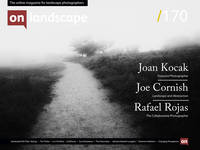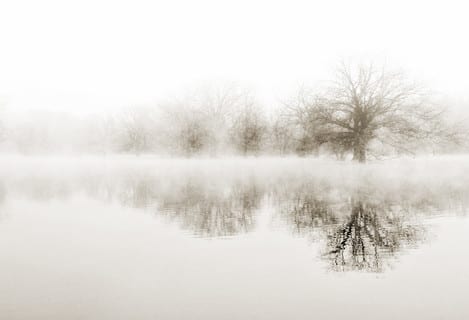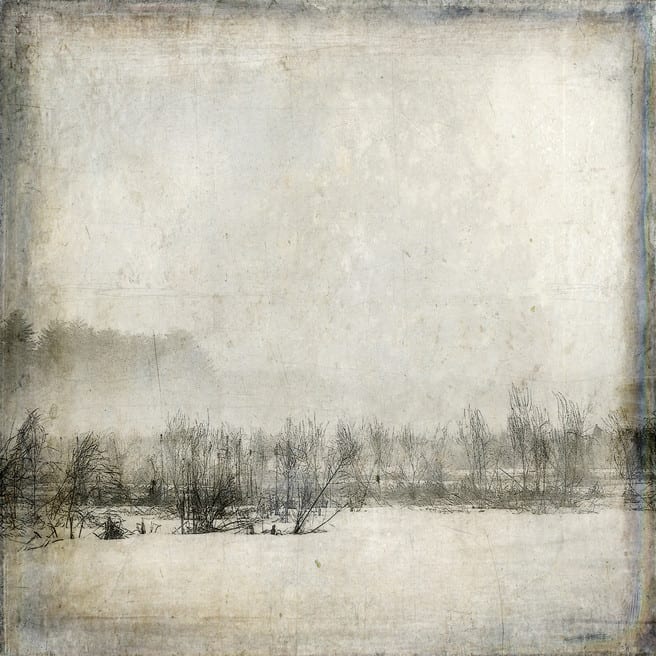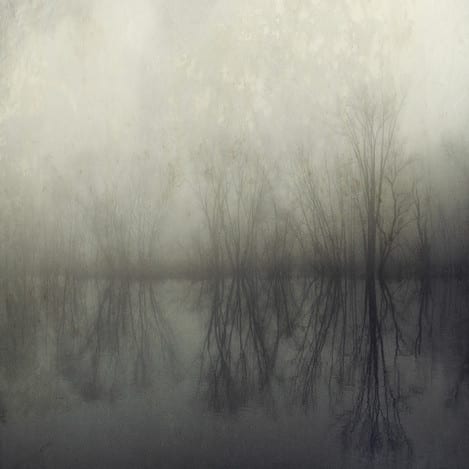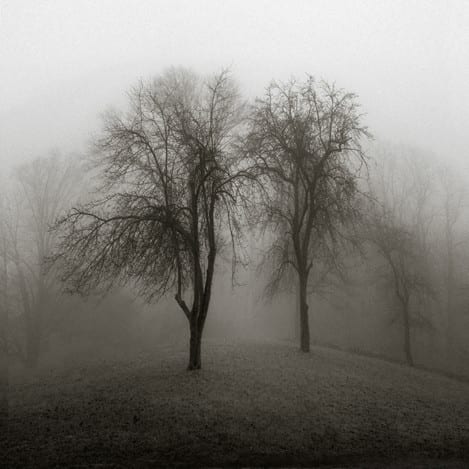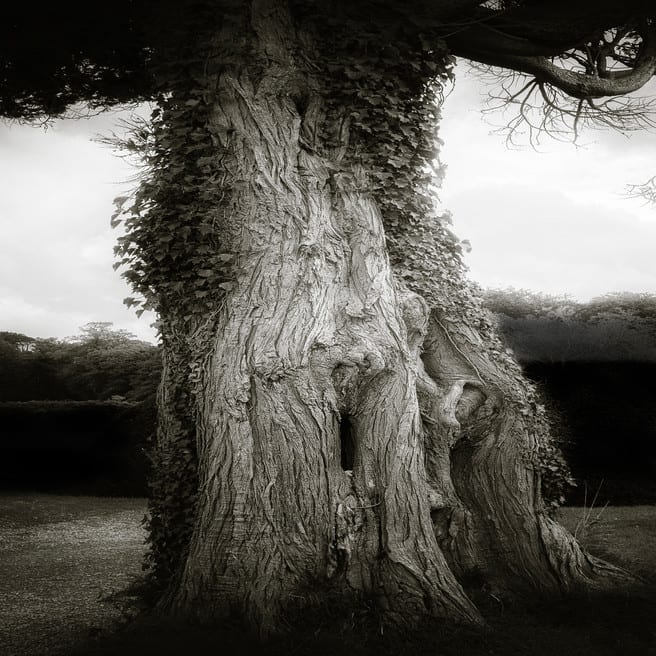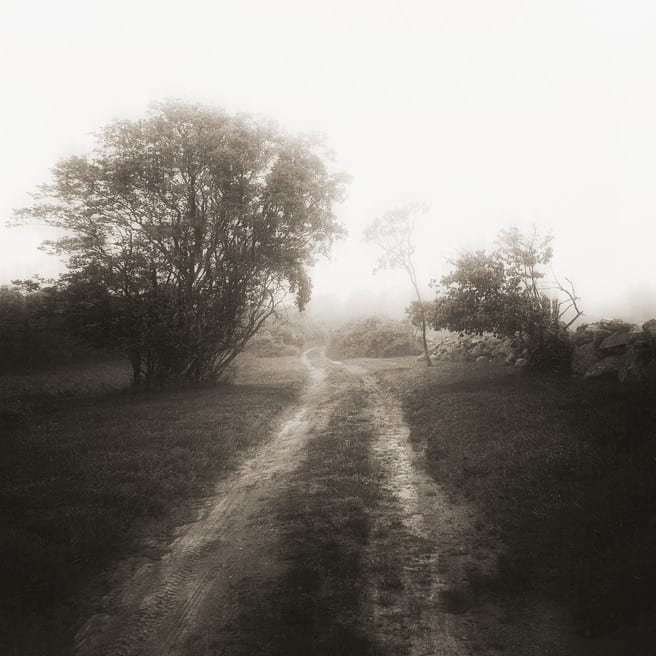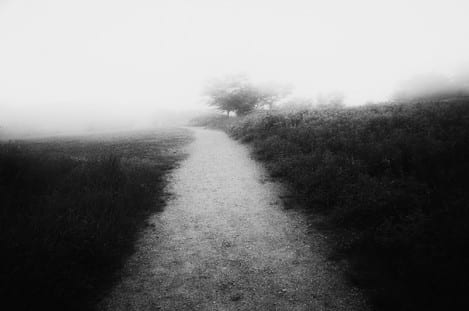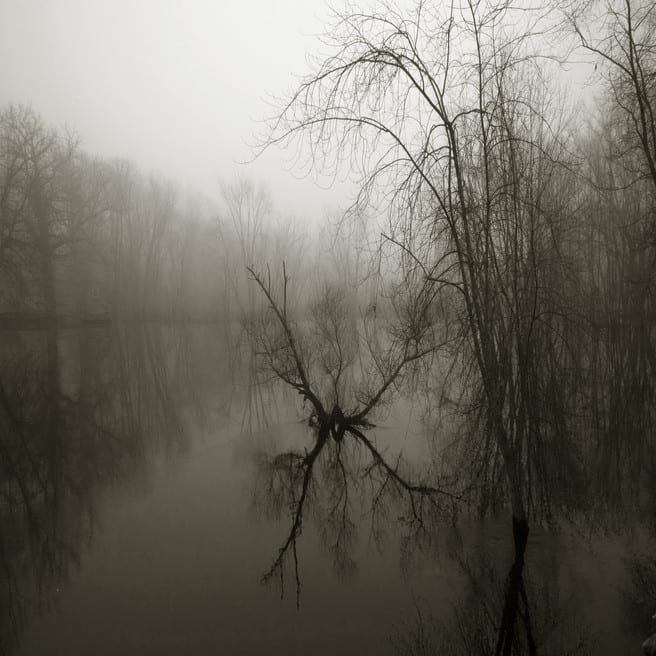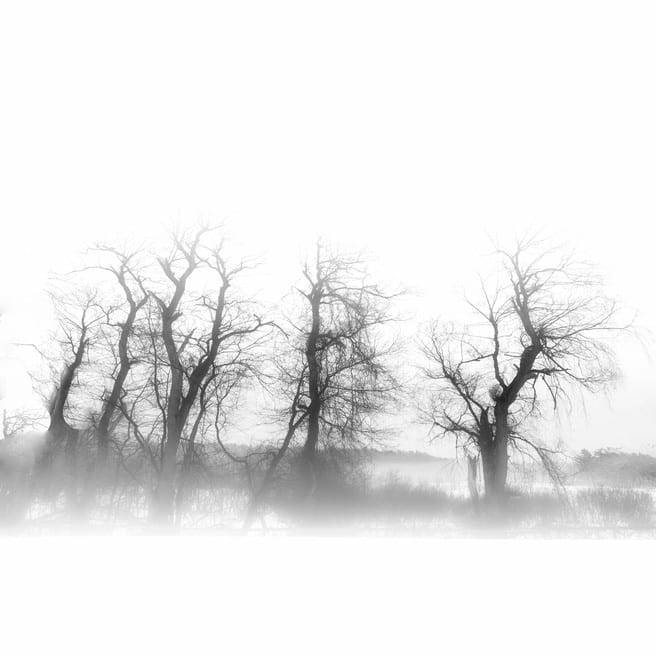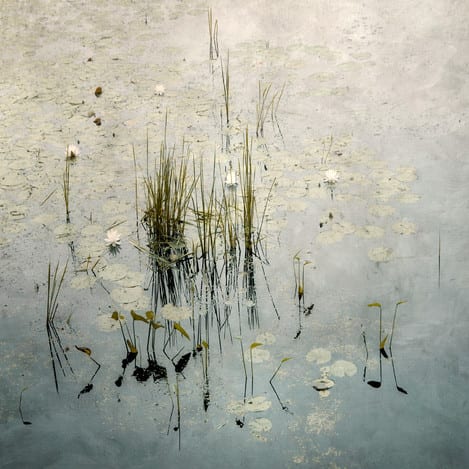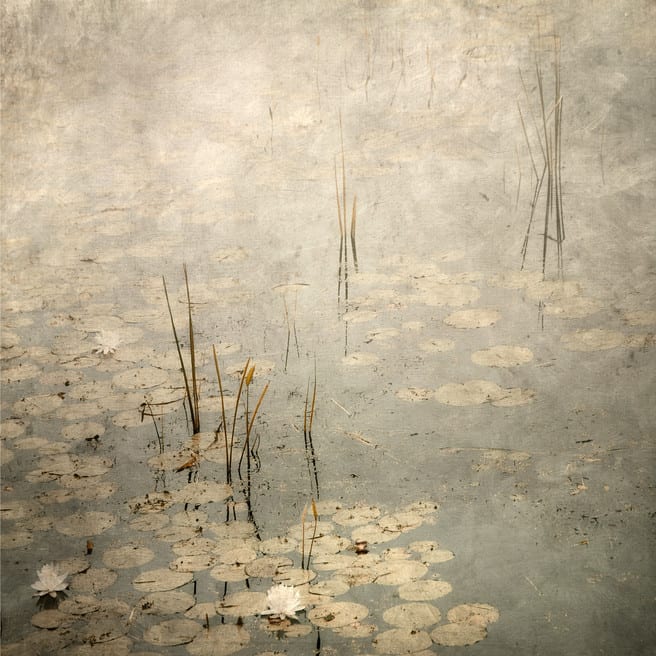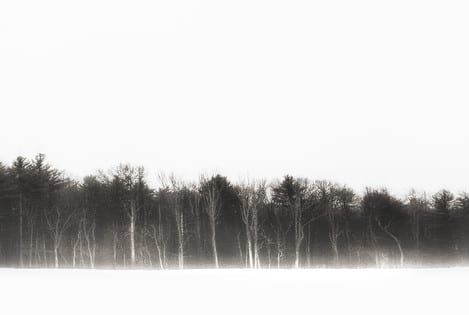Featured Photographer

Joan Kocak
I'm a former graphic designer enchanted with all forms of photography: analog, digital, toy camera, Polaroid, alternative process. I seek out the graphic shapes of nature in the forests and rivers near where I live in the north-eastern United States as well as through my travels. Currently exhibiting in galleries in New England.

Michéla Griffith
In 2012 I paused by my local river and everything changed. I’ve moved away from what many expect photographs to be: my images deconstruct the literal and reimagine the subjective, reflecting the curiosity that water has inspired in my practice. Water has been my conduit: it has sharpened my vision, given me permission to experiment and continues to introduce me to new ways of seeing.
Every now and then social media feeds throw something a little different your way, which is how we’ve come to talk to Joan Kocak. It’s easy to think that you have to travel to make interesting images – all we learn in reality is how little we know of a place and without returning many times it’s unlikely that we will do much more than scratch at the surface. Our images are about place or subject, rather than being a reflection of us as individuals. In time some of us will come to realise that it is better to work close to home, to get under the skin of what surrounds us, and to let it get under ours.
Would you like to start by telling readers a little about yourself – where you grew up, your education and early interests, and what that led you to do?
I grew up in the days when parents let their kids out the door in the mornings and didn’t ask many questions, assuming you’d show up again when you were hungry. Gratitude for being raised in the Connecticut countryside is with me every day, and gave me a profound respect for nature, though I didn’t realize it at the time. We had heaven: ponds to skate on, forests to wander through, endless days of fields and trails.
Every problem could be solved with an escape into the woods, even during the years of teenage angst (though I may have been sneaking a cigarette out there in those woods also). I was a psychology major in college, with an art minor. It should have been in reverse order.
When did you first pick up a camera and what kind of images did you initially set out to make?
I loved to paint and draw when I was very young and maybe inherited that from my dad who had a knack for portraiture. It was his cameras that fascinated me: an Ikoflex, several box cameras including the magical Brownie that he let us play around with. It wasn’t until I saved up enough money in high school to buy my first SLR camera, a Minolta 101, that I just started taking pictures of any and everything.
I didn’t think about it very much; I just always took my camera along and as a result, I have boxes and boxes of odd photos - everything from someone’s foot to a fork on the floor. There are a couple, though, that I like to this day. And it’s interesting to see that many of the themes I shoot today caught my eye when I was young.
Who (photographers, artists or individuals) or what has most inspired you, or driven you forward in your own development as a photographer?
I pored over the work of many different types of photographers and admire still a broad range of styles, from Irving Penn to Robert Frank to Garry Winogrand. But somehow my own photos always come back to nature and the places most revered to me, with occasional detours into travel photography.
I now live outside Boston in a beautiful area of Massachusetts covered in conservation land and trails. These are places where I always find inspiration with the changing seasons, places I’ve walked with our various dogs over the years.
Inspiration is everywhere. This morning I was in a vintage shop and found a beautiful book by photographer Roman Loranc. I was unfamiliar with his work until now and am thoroughly taken with his stirring landscapes. We both share a love of trees and his images are transporting. It’s like finding a treasure to look him up and view his portfolios. From early on, Andrew Wyeth’s stark realism impressed me and caused me to begin painting. Somewhere in a closet, these paintings exist though I’ve lost track of them. I remember loving to paint November scenery in New England; it reminded me so much of Wyeth, with the brownfields and sense of melancholy. I still see his influence in my photos.
You’ve referred to photography as being “your life and soul”, so I guess you fall (like many of us) into the category of “obsessive” ;-) What is its appeal for you, and have you always felt this way, or did anything happen to precipitate your interest?
I’ve always loved the printed image; as far back as I can remember. Learning the darkroom in college was a turning point for me I think. It really did become an obsession and my focus on my major (psychology) suffered because of it. At that time, I still loved to paint and I was pulled in both directions, often painting from my photographs.
How much time are you now able to devote to photography and do you need to travel far to make your images?
These days I’ve put down the paintbrush and devote my time to photography exclusively. As much as I enjoy travel photography and exploring new locations, there really is no place like home when it comes to subjects for my photos. I’ll often take a little drive, either with a specific location nearby or not, and see what presents itself. Some days are very non-productive! Then you hit just the right light and time stops. Even walking the same trails daily is different each time. I love this corner of the country and am connected to it through my past.
Would you like to choose 2-3 favourite photographs from your own portfolio and tell us a little about why they are special to you? (Although the emphasis of the magazine is ‘natural’ landscape, feel free to select images from any subject or genre that you have enjoyed working with.)
Being asked to select some photos of mine that are favourites is difficult for me - not because there are so many but because this could waver from minute to minute. One day I will love something, the next I’m not so sure. I don’t know why this is, but it happens all the time. I’ll try though to choose two photos that as of this moment seem to be on my good side.
Magic Tree
“Magic Tree” is a photo taken in Ireland. This day the light was perfect, beautifully enveloping this large tree that had about it an otherworldly feel. It seemed to belong to a pack of gnomes or faeries; it stood quite majestically apart and comfortable in its quiet glory. Looking at it now, I’m transported to that day and that moment and it’s all so very vivid.
Way Home
“Way Home” is a well-worn path to a little cottage on Block Island, which is a small island off the coast of Rhode Island. How many times I’ve walked this dirt road! It leads to a place of happy times and peaceful days. I feel like I know every rock, rut and bend in the road.
To what extent – and how – does your graphic design training influence your image making? Texture and mood seem to be especially important, and you’ve talked about being drawn to graphic shapes in nature.
Working in graphic design for many years has definitely informed elements of my photos. I search for shapes, lines and patterns in nature that are simple and interesting and instantly attract me. I love the elemental empty space of an image, a sense of airiness. I will sometimes layer an image with a light texture of another image that I’ve shot, such as dirty snow or cracked sidewalks, to add a painterly aspect to a specific type of photo, being careful to not overdo it. Over time, I’m using this technique less though, in favour of the texture being applied through the process of encaustics, which we discuss later.
You list a variety of cameras and processes on your website - analogue, digital, toy cameras, alternative process, Polaroid - and elsewhere I’ve seen mention of your father’s old Ikoflex and your iPhone. What have you learnt from these, and which do you currently prefer to use?
I shoot mostly digital now, with both Nikon and Fujifilm, but still really enjoy the freedom of Polaroids and Holgas. I still also bring out the old Minolta and Ikoflex every once in a while. Each one teaches you to see in a specific way. I love that with the twin-lens Ikoflex you can be less intrusive by looking down into the camera. I’ve tried stealing some street photographs that way. I respect all forms of photography if the finished product is deserving. Indeed, some iPhone photographers are simply amazing, while some technically savvy equipment buffs leave me cold. Sometimes I’ll find a blurry old Polaroid that breaks my heart with its mountain of soul. It’s all in the telling.
We all invest a lot of time in “getting it right”, but I wonder whether in experimenting you’ve learned too from getting it wrong, or had any happy accidents?
Oh yes! I’ve learned the most from my mistakes without a doubt. Especially in the analogue days, where the cost of film and my low wages were a big issue. It taught you to really really think about pulling that trigger! And the joy of accidents that turn out to be favourites is a grand thing. If only it happened more often.
Can you give readers an insight into your workflow from the point of image capture to output?
Developing themes and series is the way I work best. I don’t always start out with a particular theme; often it just happens. Over time a pattern of images presents itself and becomes a series. Many themes are ongoing. I have a small series called “Island Horses” which is always being added to as the horses permit. These island horses aren’t always as cooperative as I’d like (nor is the weather). On any given day I usually just head out when the light is right and see what I can find. As Garry Winogrand has said, “All Things are Photographable”. When I download the day’s take I tend to not examine them too closely at first. It takes many viewings for me to really see them. I still find images from old shoots that were overlooked at the time but turn out to be some of the better ones.
For editing, I most often use Nik’s Silver Efex Pro 2. I haven’t found a better black and white image converter. I also use Nik’s Color Efex Pro 4, but sparingly. There are a lot of options in it that aren’t useful to me; a lot of editing overload. And of course, I use good old Photoshop curves and dodge and burn. The more time goes on the more I prefer less and less editing, with the exception of the abstract encaustics.
Digital images can be perfect on screen but it isn’t until you hold a beautiful print in your hands that photography really works its charms. Printing is an integral part of the process of course, and it can be frustrating at times. The paper that I use is a crucial component of each piece. Hahnemuhle German Etching fine art paper is a beautiful heavy archival paper that has the look and feel of a watercolour paper. It suits my landscapes very well and it is the paper I most often use.
Is it important to you that other people see your work in print, and what do you hope that viewers will see in your images or take away with them?
I strive to evoke a sense of place in my images and hope that the viewer can be a part of the mood of each landscape, if only for a moment. The magnificence of nature never fails to inspire me and I try to convey that. The everyday world is a beautiful place and even the most common things we see every day can be glorious if we pay attention. These trails and forests that I love to photograph are eloquent expressions of nature and provide me with a strong sense of place. Observing them change through the seasons is a delight and it truly humbles me. I hope that comes across in even a small way to the viewer.
You’ve started to work with encaustic - how has this been going? Are you applying beeswax and heat to prints, using photo transfer or planning to add collage materials?
I stumbled upon this process out of the blue. One of the joys of photography is there is always somewhere new to go in this medium - something new to try. I can’t foresee ever becoming bored with it. It still keeps me up at night with ideas. At present, I’m very interested in the textures and mood of photo encaustics, the ancient process of applying pure beeswax and resin with heat to create a unique resilient surface over a photo that is mounted on a thick wooden cradleboard. Certain images are conducive to this process, which feels a bit like combining the love of painting with photography. The finished piece requires no framing or special care save for a little buffing with a soft cloth from time to time and an avoidance of very extreme temperatures. If it was okay for the ancient Greeks I guess that is a testament to its longevity, as it began as a coating for the preservation of ships at sea and was developed into use for paintings, many of which are displayed in museums to this day. The Fayum Funeral portraits are perhaps among the best known of the ancient encaustic paintings, and they look as vibrant today as perhaps the day they were painted in the first and second centuries. Wax is a strong preservative.
I’ve begun trying to add touches of encaustic paint in addition to wax to my images as well, for a real mixed media experiment. These pieces have a mind of their own and you just have to go with the flow and not over-think it. The trickiest part is the amount of wax in each layer - too much and you have large opaque blobs that detract from the entire image; too little and you lose the beautiful textured appearance. Again, just trial and error and finding what works best for you. This is very much a process where “accidents” occur on a regular basis and can be a bonus. And not-so-great accidents occur also. The joys and the sorrows! I’m presently developing an encaustic series called “Earth and Sky” and hope to exhibit it soon. This series is more abstract than most of my other work, which lends itself well to the free-spirited encaustic process.
Do you have any particular projects or ambitions for the future or themes that you would like to explore further?
In the future, I’d love to go more deeply into long exposure seascapes/waterscapes, which I experimented heavily with some years back. The dreamy look of this technique has always captivated me. I would love to try it with city street movement as well. Another wish is to become more involved with portrait photography; I have a studio setup and have lately put it aside for landscapes and nature.
If you had to take a break from all things photographic for a week, what would you end up doing? Do you have other hobbies or interests?
If I were to take a break from photography for a week or so, I would most likely be hiking and reading (separately of course). My husband and I have a new dog named Elmer who loves nothing better than exploring the conservation trails in the area. I also enjoy summer jaunts to Block Island, which is off the coast of Rhode Island, where life is slow and simple and refreshing. However, I would still probably be taking photos there…
And finally, is there someone whose photography you enjoy – perhaps someone that we may not have come across - and whose work you think we should feature in a future issue? They can be amateur or professional.
So many artists and photographers inspire me daily. As we know, with social media and Instagram in particular, everyone’s a photographer! But if you are a discriminating user, you will find an enormous wealth of talent there. It’s a joy to run across someone who is extremely unique in their execution and imagination. You can tell they are in love with the medium and they know what they’re doing. A couple of names that come to mind that I admire greatly and that I’ve discovered online in the landscape genre are Gerald Arzt and Ando Fuchs. They are always inspiring, along with so many others that share this passion.
How fortunate to have a love like this one, photography. It has contributed to much happiness in my life, in that it steers my focus away from the problems of the day and puts it on a creative and fulfilling path. I’ve often felt it to be an entity almost, a partner in my artistic endeavours, pushing me along to a new idea, the next expression, an untried technique. Each camera has its own personality and imposes it upon me. We are cohorts of a sort, recording our emotions and setting them free.
Thank you, Joan.
For more head to Joan’s website; alternatively, you can find her on Instagram.

